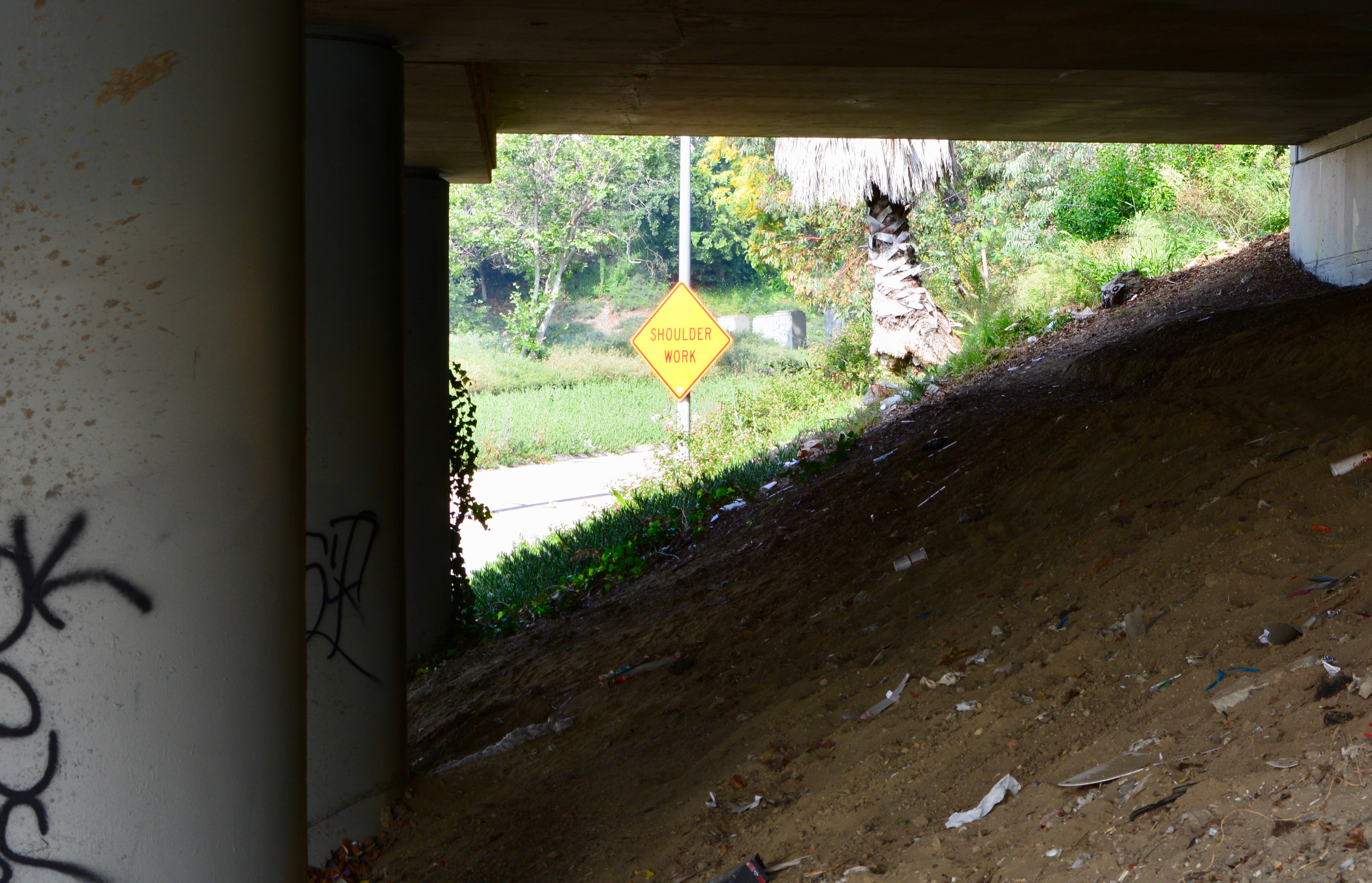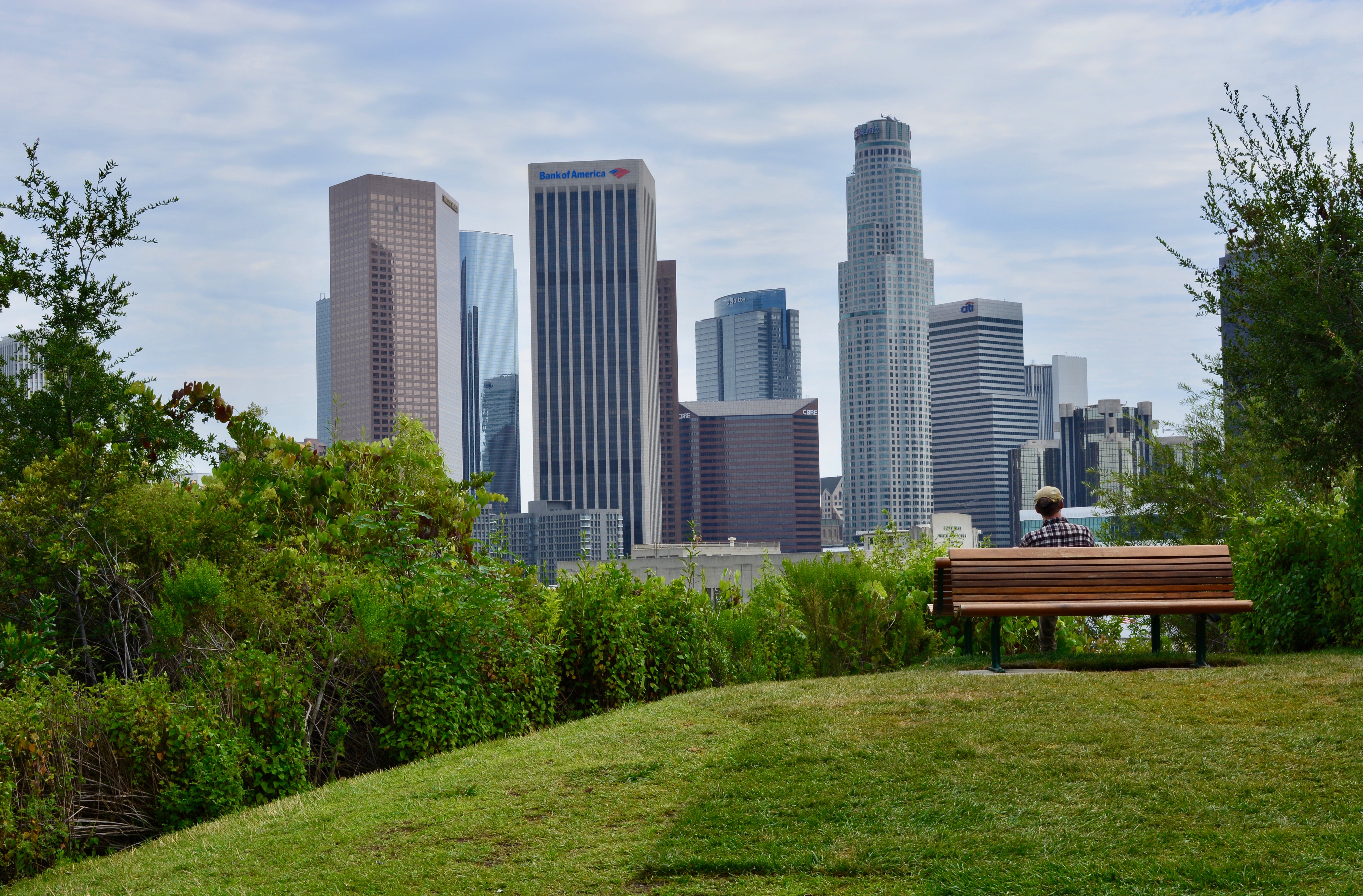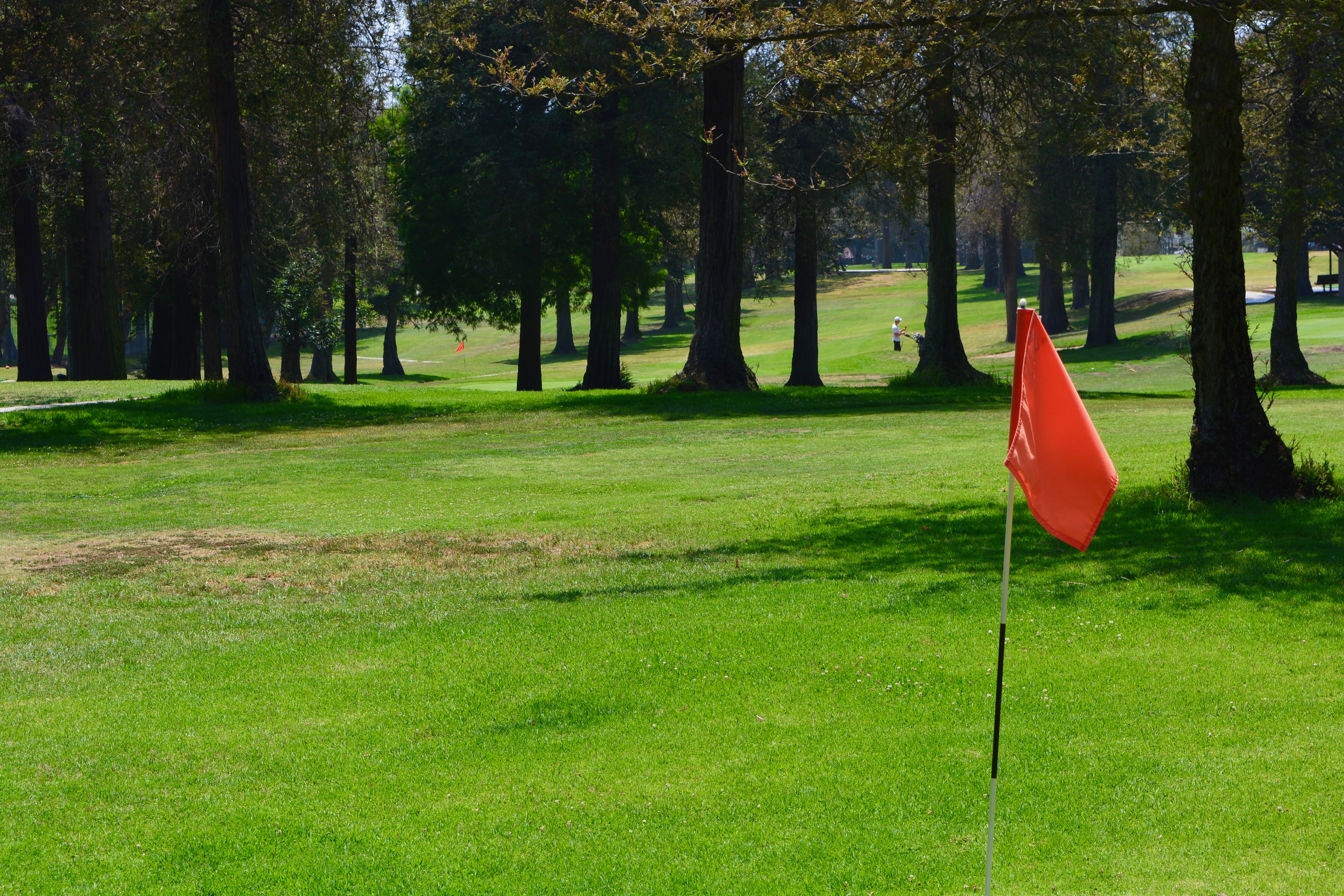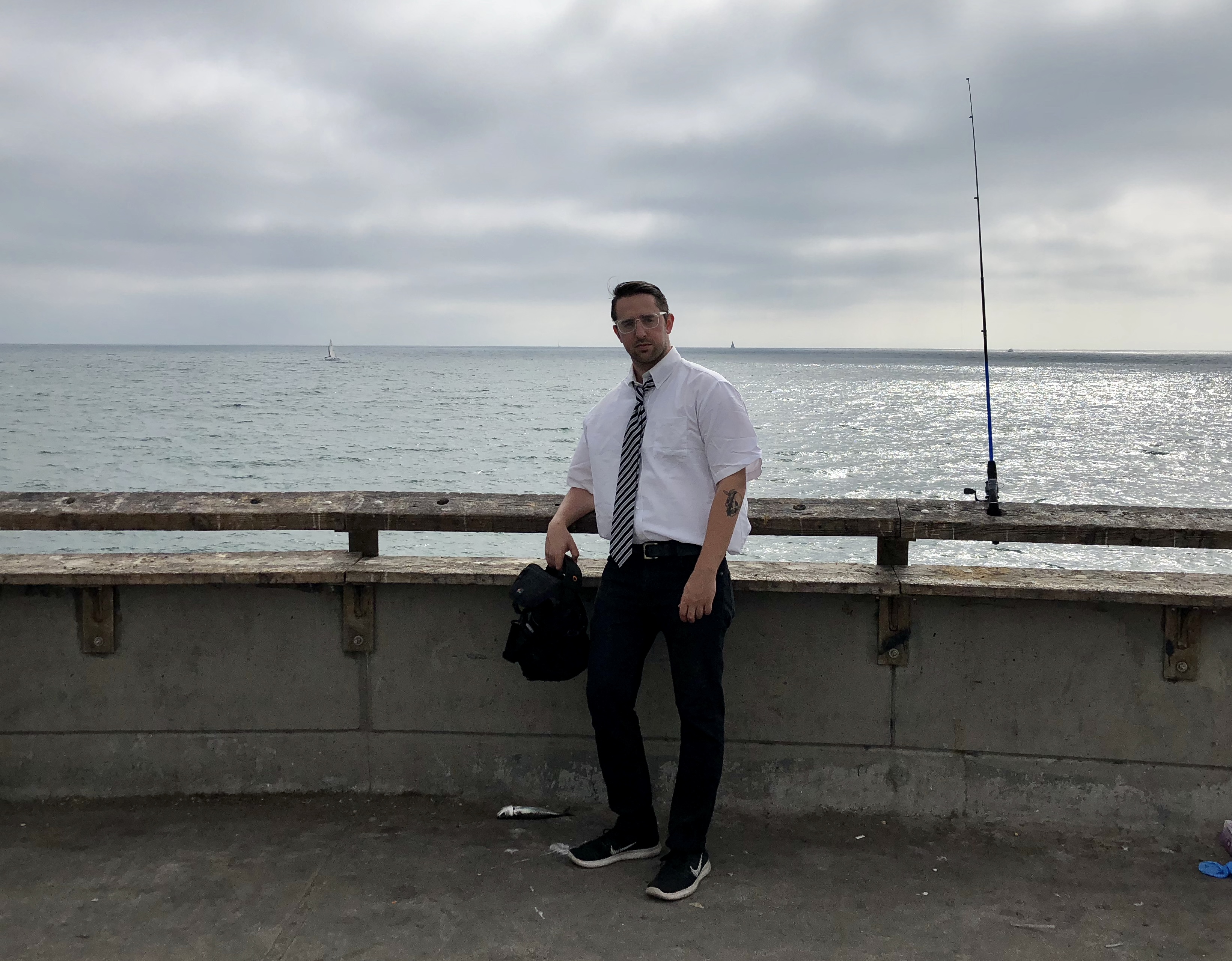I Recreated the 20-Mile Walk from ‘Falling Down’ Minus the Murders
Released in 1993, with the embers of the riots still smoldering, the Joel Schumacher film Falling Down picked at the scab of the city’s fresh wounds with a novel subversion of the justice porn genre. Its entitled protagonist, William Foster (a.k.a. D-Fens) doesn’t understand why life isn’t working out as promised for him—a decent, law-abiding, hard-working patriot, or so he sees himself.
At the outset of the film, the world-weary Foster (Michael Douglas) finally snaps while stuck in the cacophonous gridlock of a morning commute that’s made infinitely worse by being smack dab in the middle of a heat wave. The next 110 minutes depict a Homeric odyssey of escalating violence that ends ignobly with Foster’s—and far too few audience members’—realization that, somewhere along the way, he transitioned from hero to villain.
On the surface, I have a fair amount in common with Foster. He’s an educated-yet-underemployed white guy just trying to survive another day in an expensive, ever-changing multicultural metropolis that seems to be leaving him behind. We also both find the shrieks of playing children grating and have spent a lot of time wondering what the hell happened to our country. Our similarities end there.
Throughout the film, Foster channels his rage about the shitty hand the universe has dealt him—recently laid off, wife left with the kid—into scapegoating non-white and non-English-speaking “others” who he perceives as tormenters and leeches on his once polite society. He lacks self-reflection and fails to confront his own role in producing his current miserable state. He’s an economically anxious archetype that’s as old as history and more relevant than ever.
To celebrate the 25th anniversary of one of the ‘90s’ most prescient films, I spent a day recreating D-Fens’ walk from Downtown to the Venice Fishing Pier. Would the city that compelled this proto-Trump voter to menace and murder all who aggrieved him have similar effects on my own psyche as I trudged through its streets? Or would I just wind up with a bunch of blisters?

I chose a schvitzy morning in late June for my re-enactment. To fully immerse myself in Foster’s twisted mind, I suited up for the trip in a recreation of his office drone outfit. Looking extremely Dilbert in my white short-sleeve button-up, striped tie, and horn-rimmed glasses, I slathered on sunscreen and caught a ride to the ramp connecting the westbound 110 to the 101 south. It was here Foster ditched his ride and crawled onto the surface streets.
I planned my route so that I’d hit as many “on location” stops from Foster’s route as possible. The goal, however, was to recreate the spirit of the fictional walk, not slavishly ping-pong between the movie’s true filming locations. To that end, I stopped in the first ethnic grocer I encountered to purchase a can of Coke, my first scheduled nourishment for the day. In the film, Foster assaults a Korean cashier into lowering the soda’s price from eighty-five cents to a quarter so he’d receive change for a payphone. I had my cell on me and no issue with this particular bodega’s reasonable $1 price point, so I paid without incident and wished the woman behind the counter a nice day.

Caffeine buzz percolating, I made my way towards the vista where Foster first encounters some local gangland toughs. The concrete ruins from the film are now a family-friendly park, the neighborhood having been gentrified long before most had ever heard that word. The park’s scenic view of downtown LA still begs to be captured on film but, these days, the shot seems better suited for prom photos and car commercials than as a metaphor for a city falling apart in real time.
With no gang encounters on the hill and, thus, no drive-by shooting imminent, the next stop on my journey was through MacArthur Park. Everyone who isn’t from LA still pictures it as the scary place from the ’80s, but it’s actually quite safe and beautiful these days. The homeless still camp out there—in greater numbers, even, than back in ‘92—but whereas Foster regarded the beggar who approached him as yet another freeloader to be scolded, my heart has only softened for these folks over the years.
LA’s current homeless problem isn’t comprised of 55,000 bums too lazy to get a job. It’s the tragic culmination of a temperate climate, depressed economy, skyrocketing cost-of-living, scum-of-the-earth NIMBYs who no longer see these people as human beings, and a local government that turned a blind eye to the issue for too long. How could I possibly be upset with someone asking me for change when I’m just one financial crisis away from joining their ranks?
I was already an hour behind Foster’s brisk-paced schedule by the time I entered the McDonald’s in Koreatown that would be my stand in for the film’s fictional Whammyburger. In the movie, Foster threatens the restaurant staff at gunpoint after missing their breakfast menu cutoff by mere minutes. McDonald’s now serves breakfast all day, so I was able to order an Egg McMuffin at 11:30 AM without having to threaten a single person with a gun. It tasted fine.
Miles of Wilshire Blvd. stretched ahead of me as I neared the halfway point, my body was somehow still 100 percent pain-free. I passed the spot where Foster spots a black man in an outfit matching his own waving a “not economically viable” sign. It’s a brief, but powerful moment in the film. The protestor’s accurately-targeted stand against societal injustice, opposing a crooked economic system that denies so many basic human dignity, stands in stark contrast to Foster’s misguided fury at his fellow oppressed proletariat. I thought of all the workers out there soon-to-be-unemployed by automation or other advancements, conned into fighting tooth-and-nail for the privilege of ruining their bodies in a coal mine or an 80-hour workweek of multiple sub-minimum wage gig economy jobs rather than addressing the larger forces at play keeping them impoverished.
The film’s military surplus store scene was shot all the way back in Silver Lake and there wasn’t a substitute on my route to pop into, so I was forced to abandon any fantasies of encountering and smiting any Nazis (though they’re apparently hanging out at the New Girl bar now, anyway). Instead, my next stop was a golf course. I’d have to settle for messing up some fat cat’s backswing.

I’d chosen Hillcrest Country Club to serve as my proxy for the links from the film but, with a heavy security detail at the gate and walls too high to scale, I reluctantly turned my attention to the more easily accessible public course across the street. Realizing I’d be as shitty as Foster if I ruined some rounds by cutting through fairways on The People’s Course rather than pissing off the 1 percent, I decided to skip the shortcut and stay on the sidewalk.
Before long, I was south of the 10 and, shortly after that, west of the 405—two major milestones that buoyed my spirits right as my ankles began to show their first signs of failure. I had four straight miles of Venice Blvd. ahead of me, but I was finally in the home stretch.
Foster’s classic Boomer egocentrism took ever minor inconvenience that comes with living in a society, and warped it into a personal affront. It’s the same generational gene that turns every exurb dad into a feudal lord demanding a server’s fealty when he steps into an Applebee’s. Fortunately, by the time I’d reached the pier and the end of my journey, I hadn’t felt any such impulses. My walk had, in fact, only solidified the love I have for my city and its people.

Where Foster saw unnecessary construction, I saw much-needed expansion of LA’s Metro lines. Where he saw foreigners who’d taken over his city, I saw the multiculturalism that makes LA such a desirable place to live and people I have far more in common with than someone like Foster. Sure, this epilogue is virtue signal-y as hell, but I mean every word. Had Foster been able to shift his perspective and see himself as part of a larger collective—Los Angeles, America, humanity—perhaps his wife wouldn’t have left him, his life wouldn’t have been so miserable and his death wouldn’t have been so pointless.
Sitting down in a Venice bar for a much-needed beer and rest, I checked my phone to see that I’d traveled 20 miles over seven and a half hours. I was starting to get sore but it was nice to have the walk confirm what I knew in my heart all along: should I ever actually find myself fighting in LA’s streets, it’d be opposite someone like Foster, not at his side.
Follow Justin Caffier on Twitter.
Sign up for our newsletter to get the best of VICE delivered to your inbox daily.
This article originally appeared on VICE US.